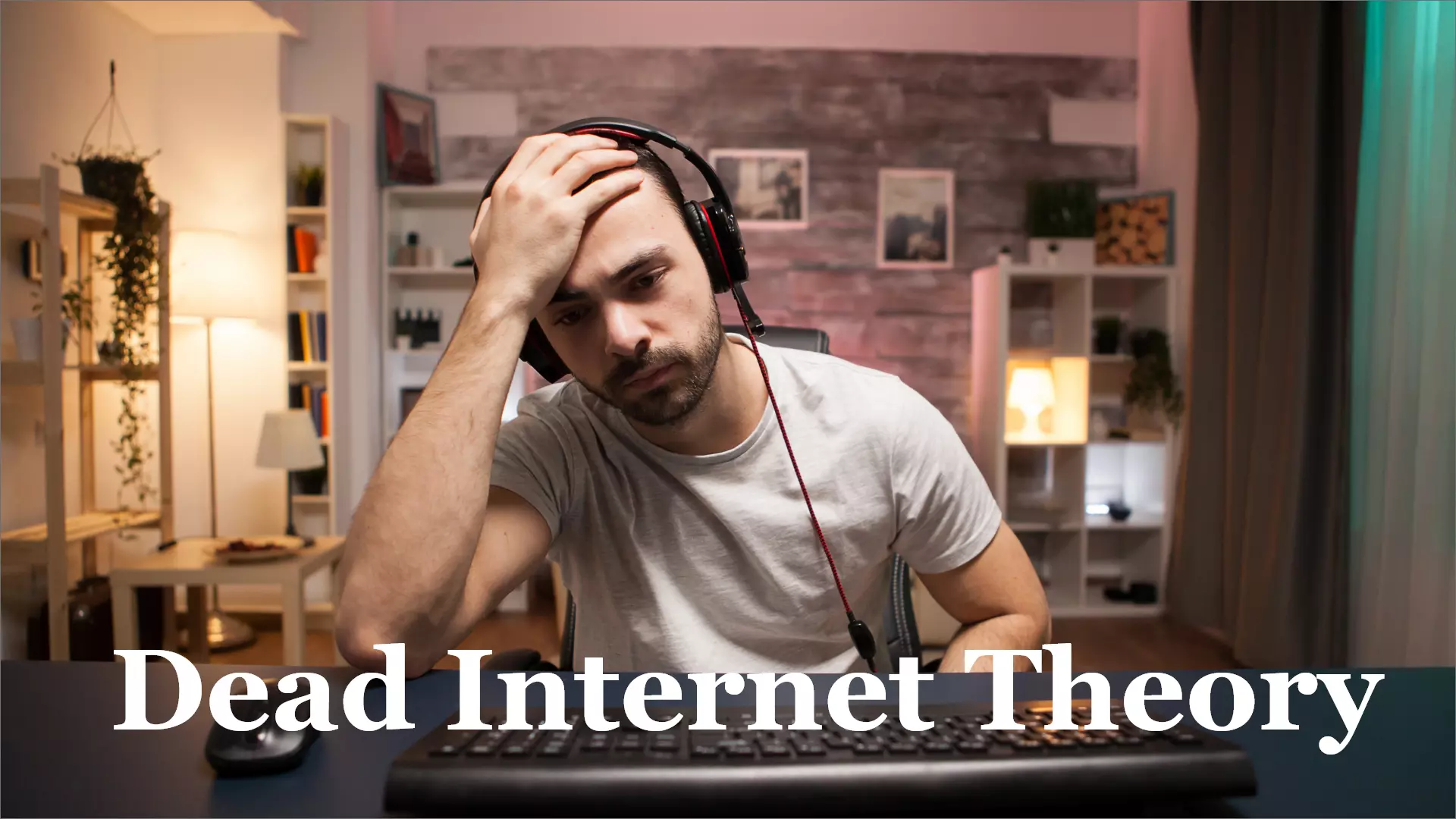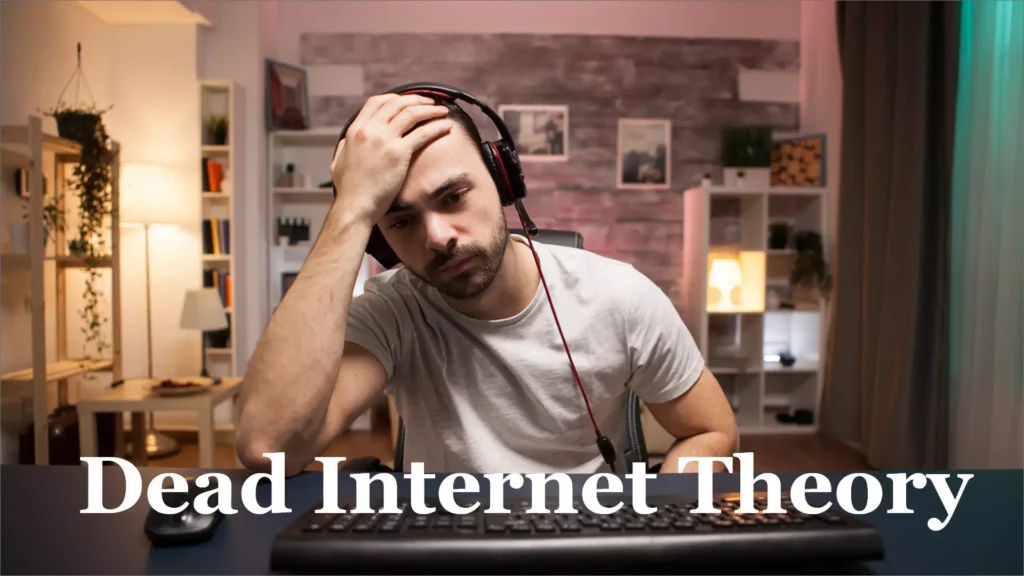
Dead Internet Theory: Is the Internet Dying in Future?

In an era where the internet has become an integral part of our daily lives, a provocative theory has emerged known as the “Dead Internet Theory.” This theory posits that the internet, which once thrived as a bastion of limitless potential and innovation, is now in a state of decline or stagnation.
In this blog post, we will delve into the Dead Internet Theory, exploring its origins and implications, and critically examining whether the internet is truly on the brink of demise. We will also assess the various challenges it faces and consider the counter arguments that suggest the internet is far from dead.
Ultimately, this discussion aims to shed light on the dynamic and ever-evolving nature of the internet and its pivotal role in shaping our world.
What is Dead Internet Theory?
Dead Internet Theory, often abbreviated as DIT, is a concept that has gained traction in recent years, particularly among tech enthusiasts and internet scholars. At its core, DIT is a speculative perspective that suggests the internet, as we know it, is experiencing a decline or deterioration.
This theory contends that the internet’s glory days of unbridled innovation, decentralization, and boundless opportunities have given way to a more controlled, commercialized, and homogeneous digital landscape.
Origins of Dead Internet Theory
While it’s challenging to pinpoint a single origin for DIT, it can be traced back to the mid-2010s when discussions about the changing nature of the internet began to gain momentum.
Influential figures within the tech industry, such as prominent venture capitalist Peter Thiel, have voiced concerns about the internet’s trajectory, contributing to the discourse surrounding DIT.
Additionally, the theory draws inspiration from the growing prevalence of data surveillance, corporate consolidation of online platforms, and the impact of algorithms on content discovery, all of which have sparked debates about the health and vitality of the internet.
Rise and Evolution of the Internet
The internet, often dubbed the “Information Superhighway,” has its origins in the late 1960s with the creation of ARPANET, a U.S. Department of Defense project designed to facilitate communication among research institutions.
This initial network laid the foundation for the internet as we know it today. In the subsequent decades, the internet evolved from a modest academic and military tool into a global phenomenon, connecting people and devices across the world.
Tim Berners-Lee’s invention of the World Wide Web in 1989 further revolutionized the internet, making it accessible to the general public and unleashing its transformative potential.
Key Milestones in Growth and Expansion
The growth of the internet has been marked by several transformative milestones:
- The 1990s witnessed explosive growth as the web became more user-friendly, and web browsers like Netscape Navigator and Internet Explorer made navigation easier.
- The advent of e-commerce allowed businesses to reach global markets, transforming the way we shop and trade.
- The proliferation of social media platforms like Facebook, Twitter, and Instagram redefined how we connect, share information, and build communities.
- The mobile revolution, catalyzed by smartphones and high-speed mobile data networks, enabled people to access the internet anytime, anywhere.
- The rise of streaming services revolutionized the entertainment industry, offering on-demand access to music, movies, and TV shows.
- Innovations like cloud computing, artificial intelligence, and the Internet of Things (IoT) further expanded the internet’s capabilities, influencing various sectors, from healthcare to transportation.
Counter Arguments to Dead Internet Theory
Here are some counter arguments to dead internet theory :
i. Counter Arguments
While the Dead Internet Theory (DIT) paints a bleak picture of the internet’s future, there are strong counterarguments that challenge this notion and suggest that the internet is far from dying. These counter arguments underscore the continued vitality and adaptability of the internet.
ii. Innovation and Growth
Despite concerns about the internet’s stagnation, numerous examples of innovation and growth in various internet-related fields demonstrate its continued dynamism.
For instance, the emergence of Web 3.0 and blockchain technology promises to decentralize power and enhance security, potentially mitigating some of the centralization and surveillance concerns raised by DIT. Moreover, advancements in artificial intelligence (AI) have led to smarter algorithms and personalization, improving user experiences and expanding the possibilities of the internet.
Additionally, the Internet of Things (IoT) is creating new opportunities for connectivity and automation, transforming industries like healthcare, agriculture, and manufacturing.
iii. Resilience of the Internet
The internet has proven to be remarkably resilient throughout its history. It has weathered various challenges, from technical issues like network outages to major security breaches and global disruptions.
Each time, it has bounced back stronger and more robust, thanks to the collective efforts of individuals, businesses, and governments. The open-source ethos that underpins much of the internet’s infrastructure fosters a culture of collaboration and problem-solving, ensuring that it can adapt to evolving threats and opportunities.
Moreover, initiatives such as the shift to IPv6 demonstrate a commitment to addressing scalability concerns and ensuring the internet’s long-term viability.
Future of the Internet
Here are some future argument and Speculation :

i. Speculating on the Future
The future of the internet is an exciting and complex landscape shaped by a multitude of factors. One of the most prominent trends is the continued expansion of connectivity.
With the rollout of 5G networks, we can expect faster and more reliable internet access, enabling innovations like augmented reality (AR) and virtual reality (VR) to become mainstream.
The Internet of Things (IoT) will also play a significant role, as more devices become interconnected, contributing to the growth of smart cities, homes, and industries.
ii. Impact of Emerging Technologies
Emerging technologies such as artificial intelligence (AI) are poised to revolutionize the internet. AI-driven algorithms will offer more personalized and context-aware experiences, from content recommendations to virtual assistants.
AI will also play a pivotal role in enhancing cybersecurity by identifying and mitigating threats in real-time. Blockchain technology, with its emphasis on decentralization and security, may transform how we conduct online transactions, reducing the need for intermediaries in various industries.
iii. Societal, Regulatory and Technological Developments
The future of the internet will be significantly influenced by societal, regulatory, and technological developments. Concerns about privacy and data security will continue to drive discussions around data protection regulations.
Governments will play a crucial role in shaping the internet through policies related to net neutrality, antitrust enforcement, and content moderation.
The balance between free expression and combating misinformation will be an ongoing challenge.
Final Words - Dead Internet Theory
In this exploration of the Dead Internet Theory, we’ve journeyed through the internet’s remarkable history, discussed its transformative impact on society, and examined both its challenges and counterarguments.
While the theory suggests a decline, the evidence of innovation, adaptability, and resilience in the internet’s evolution remains compelling. The internet is not “dead”; it’s alive with possibilities.
As we navigate the future, let’s stay engaged, informed, and critical of claims about its demise. The internet, like us, is ever-evolving, and our active participation will shape its continued vitality and influence.
Author



